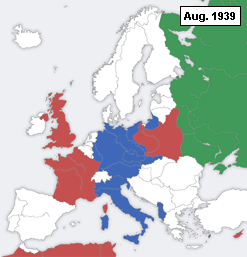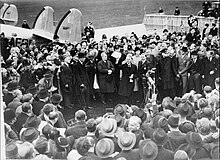
Declarations of war during World War II
This is a timeline of declarations of war during World War II.
A declaration of war is a formal act by which one nation goes to war against another. The declaration is usually the act of delivering a performative speech or the presentation of a signed document by an authorized party of a national government in order to create a state of war between two or more sovereign states. The official international protocol for declaring war was defined in The Hague Peace Conference of 1907 (or Hague II).[1] For the diplomatic maneuvering behind these events, which led to hostilities between nations during World War II, see Diplomatic history of World War II.





